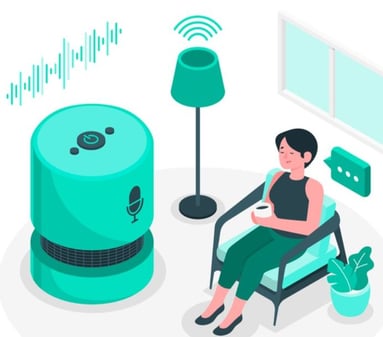All technology is assistive by nature, but assistive technology is profound by design. Whether you're using a smartwatch to quickly turn off your lights without having to get out of bed, or using a Google Nest to check the perfect recipe for chewy chocolate chip cookies without getting flour all over the screen, we all know how convenient technology can make our lives. But what if it's the only way to turn your lights on? What if it's not that you're too lazy to get up off the sofa, grab the remote control, and change the channel, but you actually can't switch from the evening news to the last game of the best-of-seven championship any other way?

For many, technology is convenient, time-saving, and in some instances, could even be considered a luxury. But for some, it's the only way to interface with the world around you. In these situations, technology quickly turns from being a cool new gadget to show off to your friends at a party, and becomes an integral part of a person's independence.
The role of assistive technology is to reduce the number of barriers a person may face when trying to access the world around them. This can be anything from a hearing aid to a fully articulating, wheelchair-mounted, joystick-controlled robot arm. Really, the only factors that qualify technology as assistive technology are how it is used and the role it plays in the user's life. It can be as simple as a cool, color changing lightbulb so that you can finally control your own lights, or a fully integrated, managed tech ecosystem. A temporary service outage is simply a frustrating speed bump for many, but for those who rely on these technologies, it may mean sleeping with the lights on or having no way to call for help.
In my experience, both as a user and an integrator, assistive technologies quickly become deeply embedded in a person's everyday life, livelihood, and independence. In fact, when these technologies fail (which, unfortunately, is an inevitable part of any technology from time to time), those using them as assistive technologies find themselves very quickly lost without them. It's easy to forget a time before regular use of these technologies, and their absence serves as a reminder of one's dependence on others to perform simple, often seemingly mundane tasks. Assistive technology frees up energy to be focused on more meaningful tasks, allowing the users to contribute and add value to the world around them.
When designing technology, it is always important to identify the target users. As we have learned from decades of "universal design" philosophies, it is important to consider the other users as well; those who will depend on and turn this technology into assistive technology. It is these users who will come up with new and unexpected ways to leverage the technology, inviting creators to adapt, improve, and drive innovation forward. Will you accept the invitation?
